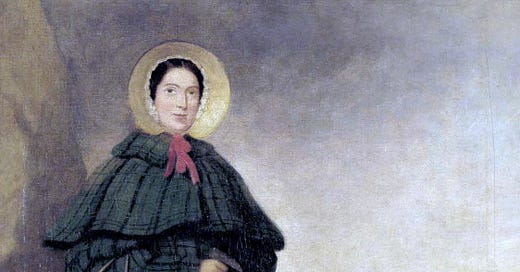INTERNAL LANDSCAPE — VISUALISATION
Internal landscape is one of the central tenets of my acting coaching practice, alongside Connection, White Space, Vista + Objects and Journey.
Your internal landscape grounds you. It gives your character a true place to stand and so makes your performance more relaxed and believable. It allows the text to flow.
I’m writing two articles about this idea of internal landscape. One focused more on MEMORY; and this one, focused on VISUALISATION.
In both, you are drawing on your own treasure-chest of memories and experiences. You have a whole universe in your head! Why not use the multitude of experiences you have had — as well as exploring new ones — so that you can be the richest and deepest you can be?
EXERCISE: SHE SELLS SEA SHELLS
Can you say this tongue twister? Give it a try. Then let’s play with the idea of the “internal landscape” of the rhyme.
She sells sea shells by the sea shore.
The shells she sells are seashells, I’m sure
Right now you probably don’t have anything in your mind other than the trickiness of the words on the page. So, let me drop-in some backstory images and then let’s see if it changes the way you say the rhyme and how difficult it is.
This tongue-twister is actually a true story about the first female palaeontologist and fossil collector, Mary Anning; and the important discoveries she made in the fossil beds near her home along the coast of the English Channel. In winter, landslides would expose new fossils in the cliffs. Mary would collect these quickly before they were lost to the sea. In fact, in 1833 one of these landslides killed Mary’s little dog, Tray.
There was not a lot of respect or funding for female scientists back then, and so Mary would sell “shells” on the beach to raise money for her work. She discovered that the “shells” she was selling were actually fossilised dinosaur poo. What we now call copralites.
Mary, who excavated the first two plesiosaur skeletons ever found, died in 1847. (You can see the only portrait of her at the bottom of this article. Scroll down and check it out now.)
OK. Now that you have seen Mary and Tray, and read their story, speak out the rhyme again and see if it feels easier when the words are supported by images and back-story.
She sells sea shells by the sea shore.
The shells she sells are seashells, I’m sure
Was it easier?
Did you see pictures in your mind?
I call these pictures your internal landscape.
The point of this next exercise is to invite you to recognise that when you talk, all you are doing is naming the images in a movie running in your head.
EXERCISE: COUSINS
The list of your cousins’ names is just a text like any other text. It is a series of words you know and can easily bring to mind and speak out. Here are mine.
Elizabeth, Andrew, Harriet, Ed, Jim, Amanda, Philip, Sarah, Jessica, Edwina, Ian, Geraldine, Pud, Rod, Jo, Susie, Sarah, Celia.
All you have to do in this exercise is speak out the names of your own cousins and then watch your partner list theirs.
As you speak, note that fleeting images will pass through your mind like clouds passing across the sun — a wedding, a trampoline, holding a new baby, a fight, an eighty-fifth birthday. With the words you say, you are just describing the pictures you see.
And as you listen, you will most likely see your partner’s eyes scoot around a tiny bit as they see the images of the people they are naming. You did that too, not that you knew it.
What is more, you probably don’t feel pressure to perform when you speak out your cousins’ names. Just as with any memorised text, there may be stumbles and a tricky name you can’t quickly recall. But you don’t feel that moment of panic, “I have screwed up!” or “I have forgotten my lines!” You know that your cousin’s name will eventually come to you as you scroll through your memories.
This is because you know and own the names experientially. You have absorbed the names of your cousins organically over time by experiencing the people and the hidden backstories behind the names you are speaking out.
This is how I am suggesting you learn your lines, using images of people, places and things to create that hidden backstory running underneath your text like an underground river.
Sometimes people will say to me “I don't have any cousins.” No problem. You can use a list of the kids in your class at school, or people in your sports team or all the pets you have ever owned. The point is to base this exercise on people, places and things you have actually experienced, not on anything imagined.
EXERCISE: VIDEO RECORDING
Here’s a way to see this play out. Set up your phone-camera in a medium-close-up. Maybe have a partner drop-in each new thought provocation. Or maybe just note them down yourself. Either way, give yourself at least 10 seconds to let each new image bud and flower in your mind.
- Your most trusted buddy at age 13
- That teacher who was mean to you at school
- Your childhood pet
- The most annoying thing about your sibling
- A moment of failure
- A moment of triumph
- Your first crush
Now, watch the video back. There are no words, but you will see and feel the complex tapestry of emotion and imagery that those relationships and events have summoned up for you.
The richness of your inner life flickers across your face. It is reflected in the way the camera reads the subtle ebb and flow of your real thoughts and memories.



